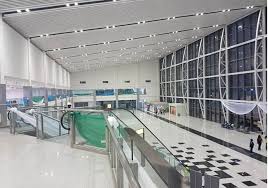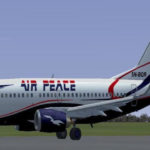
While passengers accuse airlines of being responsible for flight delays and cancellations, Writer looks at how inadequate airport facilities, paucity of technical personnel contribute to hiccups in flight operations
On the eve of Christmas last year, a Nigerian living in the US, flew into Nigeria to spend the Christmas holidays, and his children joined him, few days after his arrival.
His children left the US few days after him and were programmed to arrive Abuja and go to the domestic wing of the airport and take a flight to Owerri. So the flight was expected to arrive in the afternoon. They waited and waited and later got the information that the flight coming from Owerri was cancelled because Owerri airport was a daylight airport and does not have night landing facilities, despite the fact that it is one of the busiest airports for domestic flight operation in Nigeria.
Meanwhile, the airlines were battling to get aviation fuel, which has suddenly become scarce. They were monitoring the harmattan weather, which was unfavourable for flights.
THISDAY learnt that when the airline was able to source fuel it was late in the day. Weather reports from the Nigeria Meteoroidal Agency (NIMET) indicated that the dust haze that lowered visibility to Owerri airport had cleared by about 5:00 pm. The airline could not go to the airport by past 5:00 pm because the airport would close by 6:00 pm. So the airline cancelled the flight.
There were two factors that led to the cancellation of the flight. The first was aviation fuel scarcity and the second was lack of airfield lighting at the airport, which forces it to operate daylight services. Ironically, Owerri airport is one of the busy airports in the country and during the Christmas holidays there was high traffic to the airport.
These two factors are beyond the airlines. It is the responsibility of the Federal Airports Authority of Nigeria (FAAN) to provide night landing facilities at the airports. Scarcity of aviation fuel can be traced to the Nigerian National Petroleum Company Limited (NNPC) and the marketers. Weather is a natural phenomenon, which is beyond the control of anyone, but there are landing facilities that can enable airlines to land at low visibility at airports.
Fuel hydrants
At the Murtala Muhammed International Airport (MMIA), Lagos, flights are delayed for so many factors, including moving aviation fuel from the depot to airport. So even when the product is available it has to be trucked from the Apapa depot to the airport. This could take about two hours or more due to the perennial traffic gridlock at the Apapa-airport road. Also, there is no fuel hydrant at the airport. An airline official also told THISDAY that when the truck arrives with the product, it is left for some time for the fuel to settle in case there is dirt mixing with the fuel. So it takes a long time to fuel the aircraft during product scarcity.
But experts noted that 98 per cent of the delays occasioned by fueling the aircraft could be eliminated if there were fuel hydrants at the airside of the airports.
On the need for fuel hydrants at the airports, PEI Aerospace wrote that in the past it was once customary to refuel an airplane by pulling a tank vehicle up alongside the plane, and pumping fuel from the vehicle tanks into the fuel tanks of an aircraft.
But “today, at large airports a different system is used. Pipes from storage tanks located on the perimeter of the airport, carry fuel to various locations on the runway apron. At each of these locations, a manhole contains underground connection points or hydrants located just beneath the surface. When an airplane arrives at the position for refueling, a hydrant re-fueler pulls up alongside the airplane. The driver raises the lid on the manhole, and connects one end of a hose-located on his truck-to a hydrant. The other end is connected to equipment on the hydrant truck, which separates any water from the fuel that may be present, filters the fuel, and meters the fuel delivery. After it has been filtered and metered, the fuel flows through a second hose connected to the airplane fuel tank.”
What PEI Aerospace referred to as in the past is what really happens at all the Nigerian airports presently because there is no fuel hydrant.
Industry expert and the secretary general of Aviation Round Table (ART), Group Captain John Ojikutu (rtd), told THISDAY that he has made recommendation to government to revive the pipeline that connects the airport to Mosimi depot so that airlines could access aviation fuel from the pipeline. Fuel bowsers can now source fuel from there and feed the aircraft.
“I have advised the responsible authorities, including the Office of the NSA (National Security Adviser) in 2012 that the pipeline that bridged the fuel supply from Mosimi and got ruptured in 1992 be repaired by the NNPC jointly with the marketers; by the marketers and the airlines or given out as concession to a private company. I was told at the NSA office that I would be stepping on some people’s toes with my suggestion. I have repeatedly mentioned it thereafter even to the present Minister but it seems to me that there are powerful people behind the transportation with tankers just as there are those behind the oil theft and those middlemen between the NNPC and the major marketers that are making it impossible for fuel to get to the independent marketers,” he said.

Terminal Facilities
During the launch of aviation book recently at the Lagos airport, the Vice President of Airline Operators of Nigeria (AON) and the Chairman/CEO of Air Peace, Allen Onyema, spoke on behalf of the association and lamented about inadequate facilities given to domestic airlines at the nation’s major airports.
Onyema said that as the festive season approached, traffic influx was likely to outstretch facilities at airports, especially Abuja where only a few check-in counters are available in a small hall for processing hundreds of passengers. He said such situation naturally cause delays, impacting on airlines’ businesses and passengers’ plans.
He explained that spending more time in passenger check-in process due to inadequate facilities contribute significantly to flight delays. He insisted that 95 percent of the circumstances that usually lead to delays are beyond passengers and airlines’ control.
“Airlines are prepared, they have the means, we also know the Nigerian Civil Aviation Authority (NCAA) is alive to its duties of regulation, safety is assured but in other areas, the airport authority has some questions to answer,” Onyema said.
Speaking particularly on Abuja and Gombe airports, he said it was unimaginable for about 10 airlines passengers to occupy a small space with only four check-in counters, adding that rather than for authorities to rally round and support them, the prefer to de-market them.
According to Onyema, “Nigerian airline operators are the most patriotic citizens of Nigeria because of the environment. People blame us for late departures but airlines are not responsible for delays, passengers need to know the truth but those are supposed to protect us are demarketing us.”
He said: “AON has written to the Ministry and FAAN on the issue of Abuja check-in counters. It’s crazy, nine or 10 airlines in a very small space is not encouraging, but a few days ago, the Managing Director of FAAN spoke to me that they are going to do something about it, what we are asking for is expansion, the old international terminal is lying fallow, some airlines can be asked to move there to create more room for us, a situation where we are given few counters and we have thousands of people checking in will cause delay. I have said it; that passengers should stop blaming airlines for delays, they should look at the main cause; no airline plans to delay flights deliberately.
“Although, this government has done a lot for aviation, the Minister and the President have done a lot, a very passionate man, we need to do something about infrastructure especially at the Abuja airport, it is causing delays for airlines because once you take off from Lagos, you must experience delays in Abuja because of the check-in difficulties, there is no conveyor belts.”
THISDAY carried out investigation at the Lagos and Abuja airports and noticed that passengers have one boarding gate at the Abuja airport. During peak hours passengers spend more time at the last screening before moving to the airside to board their flights. Four airlines could announce boarding at the same time but there is only one boarding gate and the space available cannot allow queuing passengers to go through the last screening at the same time, so two airlines at least must delay their check in for the other two to process their passengers before they do their own.
At the Check-in counters, Abuja airport, during peak hours the place literally becomes Balogun market, as passengers would crowd the counters. Even the queuing process is hampered by limited space. Frustrated passengers would shout themselves hoarse, notifying everyone that their flights are boarding and they are yet to obtain their boarding pass. So what airlines have adopted is to process the passengers their flights are due to take off immediately before attending to others. But that still leaves passengers queuing for a long time at the checking in counters.
Inadequate Personnel

Industry insiders said there was also the need to ensure that there are more x-ray machines at the General Aviation Terminal (GAT), noting that there seemed to be dearth of technical staff, as observers indicate that FAAN has more of administrative staff than technical personnel and that some of those recruited were recommended by politicians in government and National Assembly and despite the fact that most of them are young, they are not trainable because of what is referred to in education as entry behaviour. This means that they are not intellectually prepared to acquire new and possibly complex skills that will enable them contribute their services to the agency.
THISDAY gathered that in FAAN and the other aviation agencies, there is bloated number of administrative personnel, many of them do not have assigned duties; so they come to work, most often do nothing and go back home after work. FAAN, THISDAY gathered, needs more marshallers, aviation security personnel, engineers and others.
THISDAY also learnt that no matter how it is organsied, it would be difficult for airlines to board passengers travelling to different destinations simultaneously without crowding and delays. This is because available facilities for passenger movement are small at the nation’s busiest airports in Abuja and Lagos.
However, passengers don’t seem to be aware of these hiccups in passenger processing, which are caused by extraneous factors beyond the airlines. As the Vice President of AON, Onyema noted, passengers only know the airlines and hold them responsible for flight delays.





